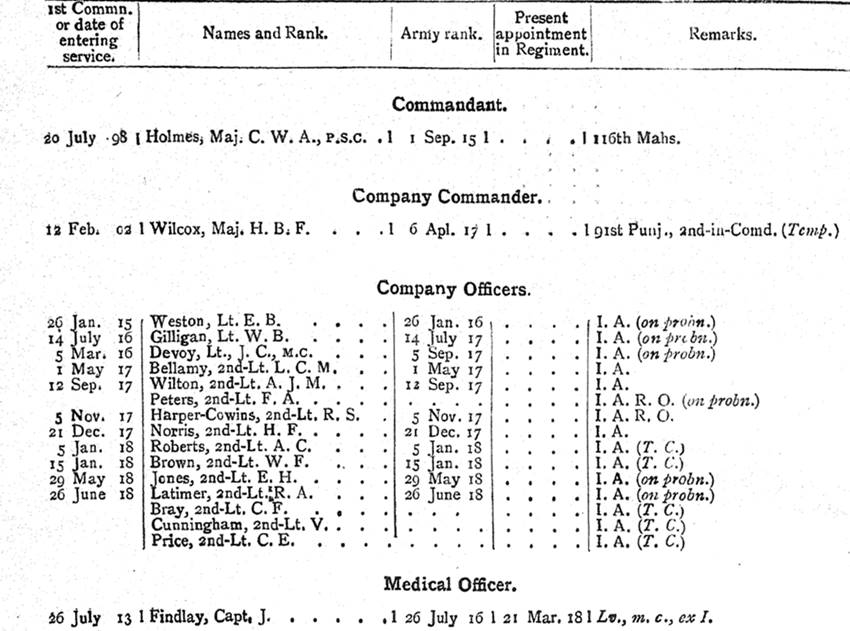This article on the war-raised 2nd Battalion 117th Mahrattas will give you an overview of the Battalion’s service during the First World War and help you research those who served with it. I have written a separate article on the 1st Battalion 117th Mahrattas and a series of guides to help you research soldiers who served in the Indian Army during the war. The links will take you to the guides below:
The 2nd Battalion 117th Mahrattas in the First World War
Lineage: The 2nd Battalion 117th Mahrattas was formed at Arangaon on 31 March 1918 and was disbanded on 25 August 1921. For a history of the Regiment’s lineage see my page on the 1st Battalion 117th Mahrattas.
Class Composition of Battalion in 1919: 1 Company of Bhandaris, 2 Companies of Dekhani Mahrattas and 1 Company of Konkani Mahrattas.
The 2nd Battalion 117th Mahrattas was a short-lived Indian infantry battalion formed at Arangaon (near Ahmednagar, Maharashtra) on 31 March 1918. The Battalion was initially commanded by Acting Lieutenant-Colonel Cecil William Archibald Holmes appointed from the 116th Mahrattas on the 4 April 1918. Cecil Holmes was a career officer first commissioned in 1898, who had served in Somaliland in 1901 and in Mesopotamia between February 1916 and February 1918. On the 20 November 1919, the Battalion moved to Multan (Punjab, Pakistan) and at a later date to Belgaum (Belagavi, Karnataka). The Battalion served first with Southern and then Northern Command during its short existence. The extract below was taken from the July 1918 Indian Army List which recorded the British officers serving with the Battalion.
General Observations: The organisation and discipline of this new battalion is very satisfactory, many difficulties have to be overcome in the raising and organising of a new battalion. These have been tackled with energy and resource by Lt-Col. Holmes who has been loyally assisted by his officers. Given a little more time and had demobilisation orders not been received this would have been a very efficient battalion.
Confidential review reports on Indian Army units, depots, British officers, etc. for 1918-1919: IOR/L/MIL/7/17030.
The Battalion was inspected again in February 1920, by Brigadier-General A. J. Poole, Commanding 44th Infantry Brigade:
General Observations: Only Headquarters and recruits were inspected as remainder were either on detachment or furlough. Turnout good, musketry very good and a good system of instruction prevails. Trained in frontier warfare. The Battalion is well commanded and Indian Officers keen and intelligent on the whole.
Confidential review reports on Indian Army units, depots, British officers, etc. for 1919-1920: IOR/L/MIL/7/17031.
The Battalion received the highest grade, “a very satisfactory report” for 1919-1920. The 2nd Battalion 117th Mahrattas did not see active service and was disbanded on the 25 August 1921.
War diaries of the 2nd Battalion 117th Mahrattas
Unfortunately, there are no war diaries for the 2nd Battalion 117th Mahrattas.
Further Sources for the 2nd Battalion 117th Mahrattas
For information regarding the British and Indian Army officers who served with the 2nd Battalion 117th Mahrattas the Indian Army List can be consulted. The two confidential reports quoted from above are held at the British Library: Confidential review reports on Indian Army units, depots, British officers, etc. for 1918-1919: IOR/L/MIL/7/17030 and Confidential review reports on Indian Army units, depots, British officers, etc. for 1919-1920: IOR/L/MIL/7/17031. These reports also contain the annual reports of the British officers who were serving with the Battalion.
